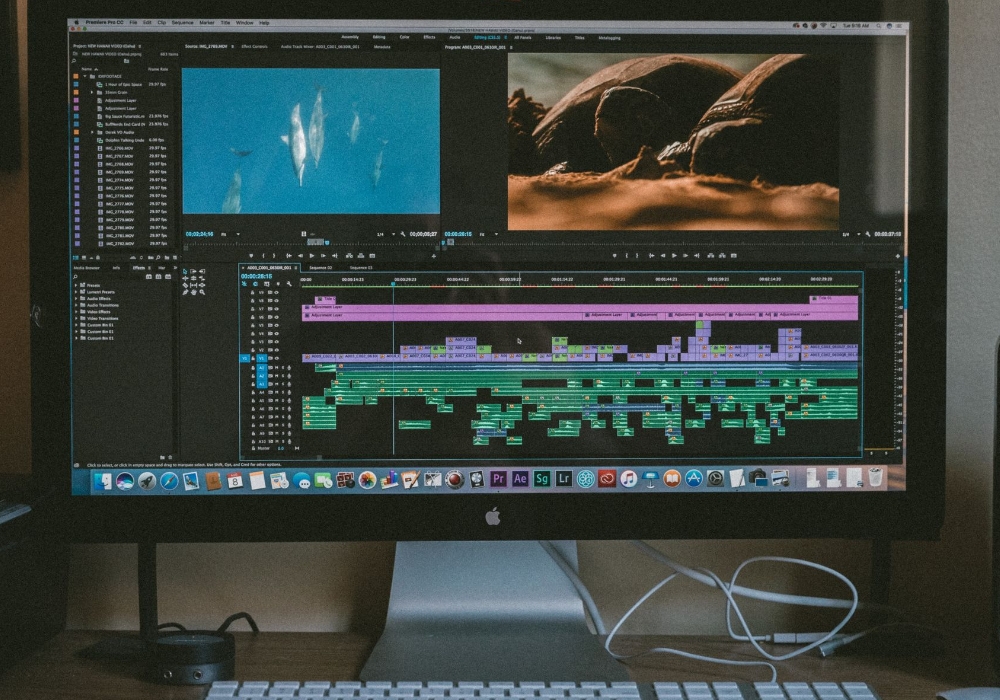How Does the Visual Artists Rights Act and Copyright Law Apply to Filmmaking?
Copyright law and the protections that are afforded to creators varies from one country to another. U.S. Copyright law is actually quite different in the protections that are exclaimed for artists and creators. Compared to the copyright protections that are provided in France, Germany, or other areas. Similarly, the Visual Artists Rights Act and Copyright Law in the U.S. are two very important forms of legislation. That provide unique protections for certain categories of creative works. But how do these regulations impact filmmakers?

Understanding the way that these two forms of legislation provide protections. And invoke limitations as to what creators may or may not do with the works that are protected by these regulations.
As a filmmaker, it’s important to understand not only what the Visual Artists Rights Act and Copyright Law mean for your own works. But how these regulations apply to your use of protected visual works. Such as paintings, sculptures, drawings, prints, or still photos.
What is the Visual Artists Rights Act?
The Visual Artists Rights Act is a passage of legislation from 1990. Which provided additional protection of moral rights of attribution to works. And integrity of works for artists that create paintings, sculptures, prints, still photographs, and drawings.
The Visual Artists Rights Act (VARA) does not apply to works made for hire, motion pictures, or books and other publications.
However, this does not mean that as a filmmaker you should not be concerned with the way the Visual Artists Rights Act and Copyright law works. As these two pieces of legislation certainly apply to creators in the film industry.
VARA protects the moral rights of artists providing protections for works of art. Even after someone has purchased the work or otherwise owns the work.
The rights that are provided through the initiation of the Visual Artists Rights Act include:
- Attribution – preventing the attachment of an artist’s name to any work that was not created by the artist. As well as to work where there has been modification which could jeopardize the artists reputation.
- Disclaim Rights – providing an artist the right to disclaim authorship in order to prevent their name or reputation from identification by a work that they do not agree with.
Artist Consent
Essentially, VARA loosely states that modifications of works that are produced by an artist can result in the work potentially being harmful to the artists’ reputation.
And therefore, such works either must not be modified without artist consent. Or in the event that modifications are made. The artist has the right to have their name removed from the work to prevent harm to their reputation.
What is U.S. Copyright Law?
Copyright law provides the creators of various works unique legal protections. Under Copyright law, filmmakers must obtain permission to use things like music, authored works, or other creative works in their films.
Copyright protects the intellectual property that is created by artists. Including screenwriters, filmmakers, authors, and those creating a variety of other works. Films are under Copyright protection as are the many different forms of intellectual property.
That are used in the creation of a film including things like the screenplay and the book or other authored work that was used to produce the screenplay. As well as music and the music recordings that may be used within the film.
Various Protections
Where copyright law provides basic protections for intellectual property. And allows for the transfer of rights from one owner to another.
The Visual Artists Rights Act provides unique protections for the moral rights of visual creators. Specifically offering protection for visual works that include things like paintings and photos but not films.
Non-Transferrable Moral Rights
Where copyright laws provide unique protections to the physical owner of the intellectual property rights allowing for such rights to be transferred. Which we see frequently in filmmaking where the film progresses through production.
And later distribution where the rights transfer from producer to distributor. The moral rights under protection by VARA are not transferable.
Thus, moral rights, such as those which apply to the use of artwork that is included within a film, are always retained by the original creator of the work and can never be transferred.
How Visual Artists Rights Act and Copyright Law Apply to Filmmaking

You’re probably wondering, if the Visual Artists Rights Act does not apply to motion pictures, then how does this apply to filmmaking?
The truth is, VARA applies to filmmaking in a variety of different ways. And Copyright law directly applies to motion pictures and filmmaking. As Copyright legislation does provide protections for films along with many other creative works.
Films often incorporate photos, paintings or sculptures into their works in various ways. Whether these items are part of the set or they become props within the set.
The artists that originally created these items are protected both by the Visual Artists Rights Act and Copyright Law.
For Example
So what does this mean for a filmmaker that chooses to use, for instance, a painting as a prop in their film? Well, it all really depends on the nature of the use.
First, in order for any filmmaker to use a painting in their film they must first seek permission to do so from the original creator.
This is standard copyright protection which prevents works from reuse without the artists’ permission. But how does the Visual Artists Rights Act apply?
Challenges
If you’re going to incorporate the use of a painting into your film and the artist is concerned about their moral rights? You could face challenges with VARA. Artists have the right to prevent filmmakers from using their name to represent the work.
In the event that the work has been altered, mutilated, distorted or otherwise modified. In such a way that one would consider prejudicial to the reputation or honor of the artist.
Thus, if you include a painting by a known artist in your film, and you’ve modified the work. In such a way that the artist believes it would be prejudicial to their reputation. Then they have the right to request their name not receive credit for the work.
In Summary
While VARA does not directly apply to films, it does apply to the use of various forms of visual works that are frequently involved in filmmaking including things like paintings and still photos.
For this reason, it’s important for filmmakers to fully understand how the Visual Artists Rights Act and Copyright Law provide certain protections for the creators of these works.
And how the moral rights of an artist can extend to works indefinitely. Regardless of transfer of copyright ownership since moral rights are non-transferrable and stick with the original creator forever.


